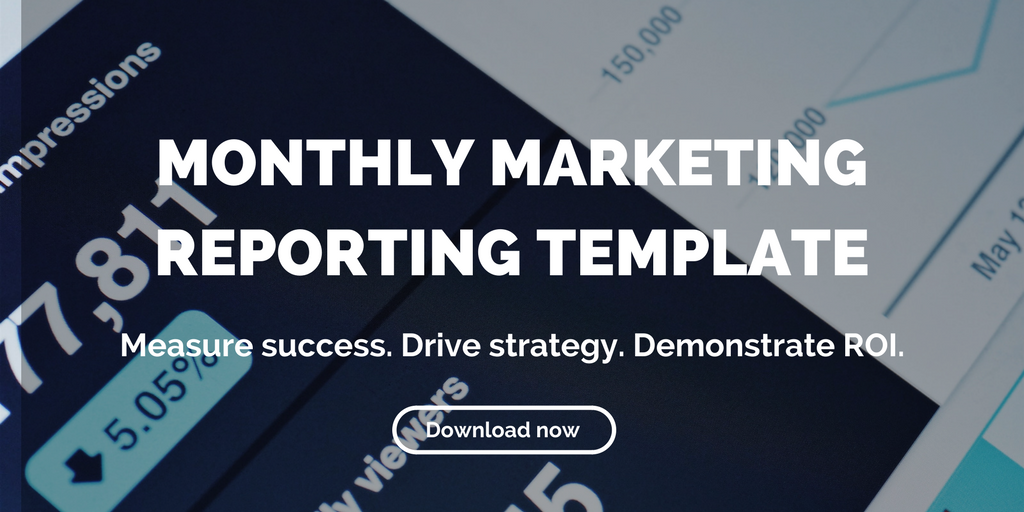Your search results for "Measuring success"

Must-Know Social Media Strategies for Real Estate
Social media fits real estate marketing like a glove—but only if it’s done right. These social media strategies for real estate will help you effectively tap into new sources of leads.
Real estate is a people business. That’s why you should leverage a marketing tool that is also all about people: social media.
If you have not begun developing social media strategies for your real estate business, now is the time to get started.
Consider for a minute that in 2017, 81% of Americans had at least one social media profile. And the numbers are projected to continue skyrocketing: by 2020, 200 million people just in the U.S. are estimated to be on social media.
And it’s not just your high school friends, and distant relatives who are all over Facebook—professional marketers are tapping into social media in a big way. A recent survey of marketing professionals found that 41% plan to up their social media marketing budgets “significantly” in 2018.
Social media strategies for real estate make a lot of sense. But that doesn’t mean that all social media use is good for your brand—the key is to use it the right way. As Bubba Mills, chief executive officer of Corcoran Consulting & Coaching, puts it, “Done right, social media can increase your trips to the bank. Done poorly, it can drive you to the poor house.”
These three strategies will help you ensure that social media takes your real estate business to the bank.
1. Know what’s out there
You’ll often hear people talk about “social media” like it’s a monolithic entity. In fact, every social media platform is unique, and comes with its own set of challenges and advantages. As you think about what content to post, consider what platform will best serve your own social media strategies for real estate.
Facebook and Twitter are ever-popular, and nearly any content can be tweaked to make sense on these platforms. More visual platforms, like Instagram and Pinterest, are ideal for showcasing properties or visual content like a before/after feature. To connect with target businesses or other industry professionals, LinkedIn is likely your best bet.
2. Be a resource: a key social media strategy for real estate
We hardly need to tell you social media is a nexus for the best and worst. When your prospects scroll through their newsfeeds, they wade through a tremendous amount of useless information. Your goal should be to grab their attention with a standout topic, and keep that attention and interest by providing value to your audience.
“When you write your social media posts, think of yourself as a teacher, not a salesperson,” says Mills. “Educate with solid facts and materials readers can use.” Establishing yourself as a trusted resource ensures a lasting and fruitful relationship with your audience.
3. Keep your eye on the prize
As with any marketing endeavor, a crucial first step is a strategy. Social media marketing is no different. A clear, documented social media strategy for real estate, with measurable goals and a mechanism for collecting data on its effectiveness is crucial for success. In the end, it’s all about generating leads—but it’s important not to forget all the steps on the way to this overarching goal.
Used wisely, social media can help build your brand, engage your potential buyers and renters, generate leads, and establish your reputation as a trusted resource.
Related posts:
- 10 Social Media Statistics for Real Estate Marketers 2018
- A Visual Guide to Social Media Posting Frequency for Real Estate
- Social Media Can Be a Strategic Weapon in Real Estate Marketing
Your search results for "Measuring success"

How to Increase Leads with Chatbots
Real estate brands are all too familiar with the challenges of generating leads. Here’s how chatbots can help by improving user experience and engagement.
Highlights:
- Within one day of adding a chatbot to our website, we had a meeting set up with a prospect. That was in the first 24 hours.
- Using a chatbot for your properties means that your real estate brand is working even when you aren’t.
- Conversational chatbots help build trust in your real estate brand while creating a positive customer experience.
We have talked a lot about the popularity of chatbots and how to implement them into your digital marketing strategy. But beyond the initial set up, have you really squeezed the juice out of this automated tool to help increase leads?
We decided to dive into the chatbot pool and our firm’s results speak for themselves. Within one day of adding a chatbot to our website, we had a meeting set up with a prospect. That was in the first 24 hours. This prospect turned out to be our next client and the initial connection was all made through the chatbot.
Lead generation with conversation
Buying or leasing a property is a huge decision, one which usually involves a range of emotions. One of the best ways to connect with potential buyers is through a thoughtful and informative customer experience.
Chatbots can help bridge the gap between your brand and potential buyers. Conversational chatbots help build trust in your real estate brand while creating a positive customer experience. They typically handle conversations with clients that are at the top of the funnel — generally people you don’t know and who might be unsure of whether they are actually going to buy/sell the property.
An article in The Startup on chatbots for real estate concludes they bring many benefits:
“The bot can be programmed on tasks like collecting basic information in the form of asking relevant questions and generating relevant answers resulting in an e-mail capture. Additionally, the chatbot can even transfer the conversation to a human agent, if need be.”
Other lead generating opportunities with chatbots
Real time answers 24/7
Questions about your new property or specific amenities? These are questions that chatbots can immediately answer. Don’t leave prospects waiting for you to return their email or form submission. Bots can answer questions about your property instantly.
The other benefit of using chatbots? They don’t need sleep! Real estate questions don’t always arrive at convenient times. Using a chatbot for your properties means that your real estate brand is working even when you aren’t. Prospects can get their questions answered 24 hours a day, seven days a week.
Virtual tours
Nurture prospects with catchy images of your property and amenities. With the click of a button, your chatbot can offer prospects a virtual tour of your property without ever leaving the page. The impact: prospects leave the chat armed with informative and helpful information about your real estate brand.
Tracking
Most chatbots automatically log interactions with leads that engage with your bot. Once you’re ready to engage with prospects, you can easily access past interactions to know where the prospect is in the sales funnel, as well as key preferences they may have expressed in earlier conversations.
Follow up
Real estate brands are constantly juggling marketing tasks. Use chatbots to help alleviate your workload with follow–up automation. Users can identify how they want to be contacted or specific questions they need answered, taking the guess work out of the follow up process.
Real estate brands need to experiment with chatbots for the ease and convenience of automation, along with the positive audience experience. But to get the most out of your chatbot make sure you’re tracking your success and tweaking interactions along the way.
Need help setting up your chatbot? We’re here to help.
Related posts:
- Using Messaging Platforms for Real Estate to Deliver Content
- Good Real Estate Marketing Gets Personal
- Social Media Trends for 2018 Real Estate Marketers Need to Know
Your search results for "Measuring success"

Paid Digital Advertising: A Beginner’s Guide for Real Estate Marketers
Paid digital advertising can help accelerate your content marketing efforts so that your content gets in front of prospective buyers and renters faster than would happen organically.
We are strong believers in content marketing. Build it, and they will come — or, in content-marketing speak, publish quality content, and buyers will come to you. But, content marketing takes time to bear fruit. There’s not much you can do about that.
Except paid digital advertising.
By investing in paid digital advertising, you can boost the reach of your posts, display ads, and videos. Pair quality content with a comprehensive digital advertising strategy, and you will be in a position to drive more traffic, create more brand visibility, and sell or lease more properties.
Your peers understand this. Within the first quarter of 2017, Facebook, Instagram, Twitter, LinkedIn, Snapchat, and Pinterest saw a 61.5% increase in paid media spend. And that’s only going to increase through 2018.
So where do you start? Here are three places to get started in using paid digital advertising to help market your property.
3 paid digital advertising platforms
1) Display ads
Display ads are the paid advertisements that appear in front of users on website pages in the form of graphics. Unlike text-based ads, display advertising relies on elements such as images, audio, and video to communicate an advertising message. Display ads are commonly referred to as banner ads, but they don’t always take banner form. They can come in all shapes and sizes, and can appear anywhere on a webpage.
Benefits: Because digital ads are visual, they can be customized with your logo, message, images of properties, or an offer to help increase brand awareness. You have the ability to use graphics, video, and audio to really stand out and highlight your properties. Display ads also allow users the ability to target a specific audience. You control which sites they appear on, which geographic area they appear in, and which demographic or niche market they appear to — all valuable tools for the real estate marketer.
2) Sponsored social media posts
There are sponsored posts plus other ad opportunities like Facebook like campaigns, website click ads, and lead ads.
Social media is a natural place to begin if you’re looking to get into paid digital advertising, particularly for the real estate industry. A good starting point is Facebook. The social media giant’s social ad revenue was more than $9.16 billion in Q2 2017 alone. And it doesn’t stop there. Twitter brought in $548 million in social media advertising revenue in the same period, and Snapchat is expected to reach over $895.5 million in ad revenue in 2017.
More specifically, three of the most useful types of sponsored social media posts for real estate marketing are:
- Facebook Like Campaigns: These campaigns are aimed directly at increasing the number of likes for a Facebook page, targeting people who might be interested in your brand and the posts you share on Facebook.
- Facebook Website Click Ads: These are ads that point people on Facebook to your website, or even the listings for specific properties.
- Facebook Lead Ads: These ads allow users to request information, estimates, or newsletters without leaving Facebook. Requiring fewer steps of prospective leads increases conversion rates.
Benefits: Running paid social ads allows you to reach a large audience at a low cost. You pay based on the type of ad you’re running. For example, if you’re looking to drive brand awareness, you’ll incur a CPM (Cost Per 1,000 Impressions). And not only are the ads relatively inexpensive to run, they’re not expensive to create. You get all of this plus the ability to target your specific audience, reaching people that are interested in learning about the properties you have to offer.
3) Google AdWords
Google AdWords places your website as one of the top results on a search engine results page (SERP) when a user searches for certain keywords of your choice. When a user clicks the AdWords link or calls your business using that link, you incur a charge (pay-per-click). Otherwise, impressions are free.
Google’s most recent update involves changes to the so-called “3-pack,” or the listing of three related local businesses on a search results page. Many users rely on the 3-pack to discover businesses in their area that offer the products and services they are seeking. This is particularly helpful for users searching for local real estate. And real estate copanies get the benefit of many additional leads and investors when they appear in the 3-pack.
Benefits: The biggest benefit of Google AdWords is its speed. You appear in a top spot in a user’s search results, meaning you are one of the first things a user sees when searching for a specific location or property keyword. That’s another good point: Google AdWords allows you to focus on people who are searching for what you have to offer, so you don’t pay for a bunch of wasted impressions — particularly valuable in real estate marketing, where geography is key. AdWords also gives you real-time reports to track your ad’s success. A dashboard shows information related to each campaign, such as the ads clicked, keywords entered by website visitors, cost of clicks and much more.
Related posts:
- How Pay-Per-Click Helped This Property Get 54 Leads
-
Learn How Content Marketing Increased Real Estate Sales by 37% in 90 Days
-
Using Content Marketing to Market and Sell Luxury Real Estate
Your search results for "Measuring success"

5 Creative Ways to Use Instagram Stories for your Luxury Real Estate Brand
Luxury real estate brands are capitalizing on Instagram Stories to highlight property features and give followers an inside look at what sets them apart.
Highlights:
- With such a highly visual platform comes the challenge of standing out from other luxury real estate brands.
- Stories helps boost reach and engagement by giving users ways to engage with your content.
- Don’t be afraid to make your content pop through filters on your images and videos, use fun fonts and bold text, and create slideshows that break your stories into parts.
Instagram is a natural fit for real estate marketing. And with the growing popularity of Instagram Stories, marketers are increasingly using this feature to highlight their properties and luxury real estate brand. When implemented as a part of a robust digital marketing strategy, Instagram Stories is an ideal place to showcase your latest projects.
But with such a highly visual platform comes the challenge of standing out from other luxury real estate brands. If you want to generate leads, increase ROI, and ultimately close deals, you’ll need to think outside of the box.
Here are five creative ways to use Instagram Stories for your luxury real estate brand
1. Go behind the scenes
Because of the informal feel of Instagram Stories, it’s a great place to highlight your luxury real estate brand and give viewers a behind-the-scenes look at your property. This intimate view into what makes your brand unique helps build engagement and brand loyalty.
Some ideas to showcase your luxury real estate brand include:
- Highlight premier features of your property
- Snap a picture or short video at local restaurants, bars, and events by your property
- Upload an image of an office brainstorm or staff meeting
- Feature new marketing ideas or things your staff are working on
2. Engage
I recently read that Instagram algorithms can make organic reach difficult, which means that engagement can be a challenge. But Stories helps boost reach and engagement by giving users ways to interact with your content. Ask viewers a question or create a poll to encourage audiences to share thoughts with your brand. What’s your favorite feature in the new penthouse unit? What color should we paint our office door? What videos do you find most appealing. And when audiences respond to your questions or polls, make sure you re-engage with them.
3. Highlights
Looking to get more shelf life out of your Instagram Stories? Try using the Highlights tool.
“Instagram Stories Highlights can live permanently on your profile. They’re like curated collections of Instagram Stories that your followers — both old and new — can tap into and watch any time they like.
“And because of their prime location directly under your bio and above your Instagram feed, it’s the perfect place to direct followers to your most valuable and interesting content,” writes Benjamin Chacon for Later.com.
Highlights is a great tool for gathering several of your most engaged stories and blog posts, and organizing them by topic. For example, your luxury real estate brand can create different highlights for property features, neighborhood information, and office culture. Viewers can easily sort through your content based on their personal needs.
4. Be visual
56% of marketers said they use visuals in their content almost 100% of the time. Instagram called the feature “Stories” for a reason. Don’t be afraid to make your content pop through filters on your images and videos, use fun fonts and bold text, and create slideshows that break your stories into parts. Visual content has significantly higher engagement rates, so get your camera ready.
5. Luxury branding
Instagram Stories leverages two things today’s buyers love: beautiful images and engaging videos. The tool extends a brand’s audience, shows the ins and outs of what makes your brand unique and promotes engagement with your Stories, as well as your Instagram posts. All of these elements develop brand awareness and, hopefully, brand loyalty.
Final thoughts
I’ve heard some luxury real estate brands are hesitant to use Instagram Stories, because of the informal vibe of the tool, something that’s not usually synonymous with luxury real estate. But as Instagram continues to grow in popularity, it’s important for brands to follow their audiences.
Remember, Instagram Stories is just one part of your dynamic digital marketing strategy. Have fun with the tool, experiment with posts including videos and pictures, and see what followers engage with the most. You might be surprised how well your Stories perform.
Still hesitant about getting started? Let us help.
Related posts:
- Measure Social Media Success in Terms of Potential, not Dollar Amount
- How to Use Social Media Hashtags in Real Estate Marketing
- How to Use Instagram for Real Estate Marketing
Your search results for "Measuring success"

For More Creative Content, Break These 4 Rules
The best way to come up with engaging and creative content is to think outside the box and, sometimes, take risks. Here are 4 rules to break to produce truly creative content for real estate marketers.
Highlights:
- Produce creative content by throwing out the template approach and start thinking about what makes you stand out.
- Don’t be afraid to showcase what you do best through different avenues, like customer or vendor testimonials.
- When you’re committed to curiosity, you naturally become a learning organization and this learning leads to more creative content.
With over 4 million blog posts published every day, you have to be really creative to drive traffic to your website and attract prospective tenants or buyers to your properties. Marketers may think they need to follow these rules, but in fact, you need to break them to craft creative content.
1. Mirror competitors
While it’s true there might be trending topics that you will want to cover, you should think more about the value proposition of your specific property and put the focus there. This will help you write creative content that stands out from your competitors and is not repeating what “everyone else is doing.” Remember, your property is unique, so your content should be too.
2. Marketing mindset
While your marketing team knows everything about your property, some of the best stories and blog content come from your other teams. Existing residents or buyers, property managers, neighborhood vendors, and local businesses often have a really good prospective or story to tell. Tap into those unique stories for creative (and personalized!) content.
3. Keep it obvious
While there will definitely be some obvious things that stand out about your property that you’re going to want to highlight, sometimes the most creative content comes from a different perspective. For example, you may want to talk about events that are taking place near your property over the summer, like rock concerts, performance art, open-mic nights, or anything else that appeals to your buyer personas. Don’t be afraid to get specific and dig a little deeper; the result will be creative content that stands out to prospective tenants or buyers.
4. Repeat success
While it’s true you should look at the analytics and build upon content that has been successful in the past, you should also be taking some risks when you’re developing your content calendar. Build in a healthy mix of what’s worked for you in the past — what resonates with your target audience — and something new, out of left field. Real estate marketers need to keep experimenting. Audiences are constantly evolving, so your content should be too.
Have you published creative content by thinking outside the box? Have you been successful?
Related posts:




